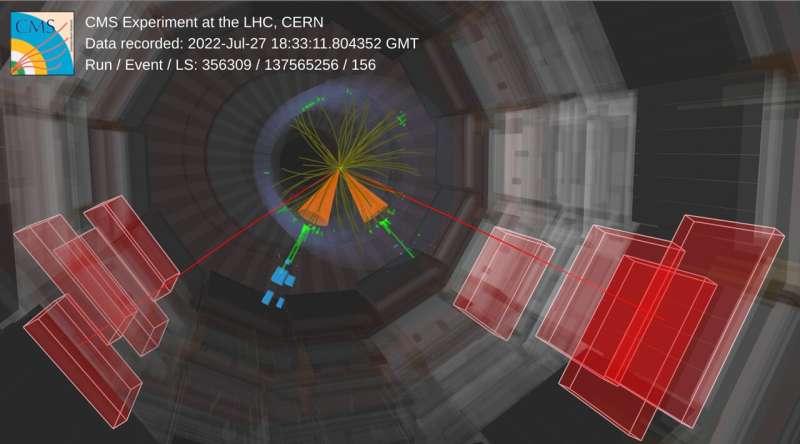First 'Run 3' physics result from the Large Hadron Collider's compact muon solenoid

On July 5, the LHC roared to life for its third run after three years of continual improvements to the machine as well as to the experiments' detectors and analysis tools, and immediately reached a record energy of 13.6 TeV. Just three weeks later, the compact muon solenoid (CMS) collaboration was ready for its physics data-taking period.
The CMS collaboration recently presented its first Run 3 physics results of the production rate of pairs of the heaviest elementary particle, the top quark. In just one week, from July 28 to 3August 3, the CMS collaboration collected data equivalent to almost 12% of the data set that had been required for the Higgs boson discovery in 2012.
Before Run 3 began, it was hoped—and has now been confirmed—that it would be possible to gather such a vast amount of data in a very short time. It took physicists two years to collect the data used to announce the Higgs boson discovery in 2012. But now, thanks to developments in data acquisition and selection systems and to the unprecedented speed of the analyses, the Run 3 data can now be analyzed in almost real time.
Due to the high number of top-quark pairs created at the LHC, physics analysis can start with even a small amount of data. The production rate of this heavy system of particles has been enhanced by about 10% thanks to the collision energy increase from 13 TeV in Run 2 to 13.6 TeV in Run 3.
The CMS results, which agree with the Standard Model prediction, are important because precise measurements of top-quark properties provide, among other things, crucial input for various searches for new phenomena in Run 3. Because of its high mass, the top quark decays immediately to a b quark and a W boson, which is also an unstable particle. The decay products leave traces as they pass through the detector, making it possible to observe them and to test the detector performance.
Precision measurements of the Standard Model are an essential part of the Run 3 program, as any significant deviation could hint at new physics. The measurement of top-quark pair production rate is only the first step into the unexplored territory of the new energy regime, where answers to fundamental physics questions may be found.
Provided by CERN





















